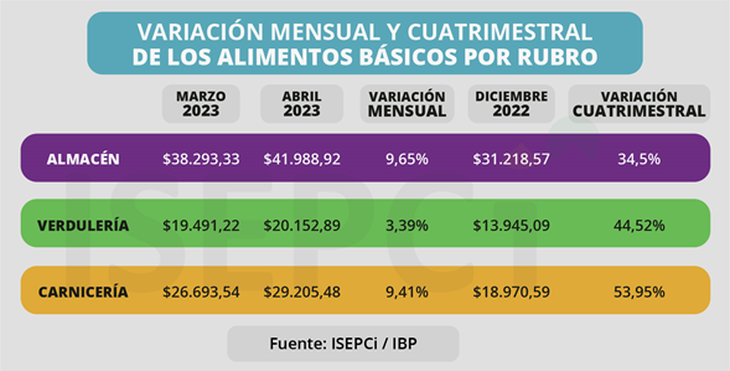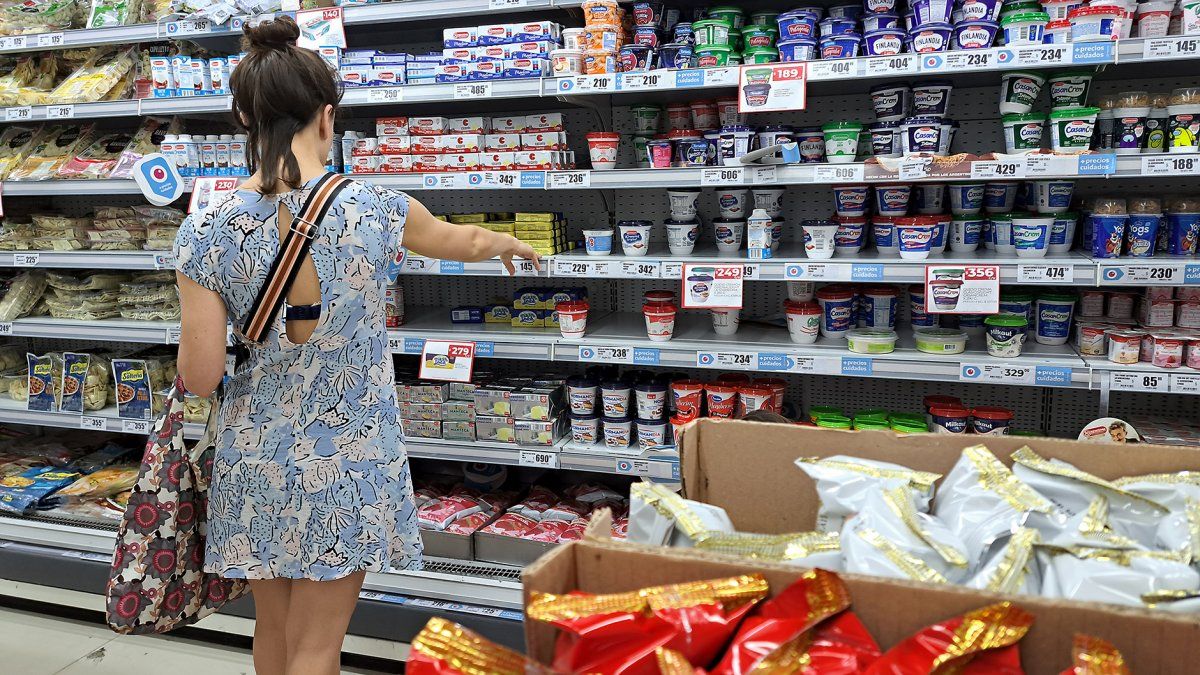The increase in Basic Baskets in the first four months of 2023 (42.4% in food and 39.3% in Total Basic Basket) is the highest in the last five years, according to a new ICEPCI report.
According to the monthly survey carried out by ICEPCI (Institute for Social, Economic and Citizen Policy Research) in 900 local businesses in 20 districts of the Buenos Aires suburbs, the value of the Basic Food Basket (CAB) for a family of two adults and two small children, in April it reached $91,347.30. This meant an increase of 8.13% compared to the $84,478.10 that the same products cost in March.
The content you want to access is exclusive to subscribers.
The increases in April, added to those that have been taking place since last December, add up to a rise of 42.43% for the four-month period of 2023. In April, the items that increased the most were Warehouse (9.65%) and Meat (9.41 %), while Fruits and Vegetables rose 3.39%. In the four-month period, meats increased 53.95%, fruits and vegetables 44.52%, and grocery products 34.50%.


image-11.png

On the other hand, the value of the Total Basic Basket (CBT) that includes, in addition to basic food, essential expenses in health, education, transportation, clothing, tariffs and housing maintenance expenses, rose 6.70% in April, which which, added to the increases in January, February and March, brings the four-month increase to 39.30%.
This four-month increase in Basic Baskets is the highest in the last five years, and surely one of the highest since the crisis at the beginning of the century, which speaks of an inflationary acceleration that, for now, finds no brake.
image-5.png

“As we have been constantly saying and demonstrating, the incessant increase in the prices of basic consumer products, has no correlate in the increase in wages, retirements, social allowances, especially for those who receive the minimum. The consequence direct is the maintenance for years of poverty at levels of around 40% and indigence around 8% of the total population,” they say from ICEPCI.
“In the first semester of 2019, indigence reached 7.7% on average for the entire national territory, and from then on it never fell below 8%, reaching a peak of 10.7% in the first semester of 2021. After After two years of significant post-pandemic growth (10% in 2021 and 5% in 2022), homelessness was still stuck at more than 8% in December last year, poverty reached more than 40% of Argentines in the year of the pandemic: in that first semester it reached 40.9% and rose to 42% in the second semester, but in 2021 when the economy grew 10%, the decline in poverty barely dropped to 40.6% in the first semester and 37.3% in the second. In 2021, while the economy continued to grow, poverty rose again to 39.2%,” they assert.
Source: Ambito




